Olfactory Reference Syndrome Treatment
Olfactory reference syndrome treatment. Different approaches to treatment have been described. Despite the profound psychosocial impact of ORS many patients do not receive appropriate treatment and there is no empirical. To introduce you to ORS we discuss its clinical diagnosis and treatment based on our review of several hundred cases including the largest reported series of patients with ORS.
People who are closing their. People with ORS often engage in ritualistic and. Olfactory reference syndrome ORS is characterized by a preoccupation that one is emitting a foul or offensive odor.
Treatment studies of olfactory reference syndrome have not been done but clinical experience and published case series suggest that SSRIs or clomipramine alone or used with an antipsychotic an atypical is preferred if needed and cognitive-behavioral therapy similar to therapy for body dysmorphic disorder may be helpful. Prominent referential thinkingbelieving that other people perceive the odoralso is common. 23 ORS also appears to share.
Usually people with olfactory reference syndrome repeatedly do certain things such as showering excessively brushing their teeth or smelling themselves in response to this preoccupation. The primary treatment for both Olfactory Reference Syndrome and OCD is a facet of Cognitive Behavioural Therapy CBT called Exposure and Response Prevention ERP which involves confronting obsessive beliefs and accepting them without engaging in compulsive behaviours. They may also think that others are sitting far away covering their noses or taking special notice of.
Successful Treatment of Olfactory Reference Syndrome With Paroxetine To the Editor. For more severe symptoms treatment with both medication and CBT concurrently is usually recommended. Some people with ORS seek treatment of their odor concerns from non-mental health clinicians such as ENT ear nose and throat doctors dentists dermatologists surgeons gastroenterologists and gynecologists.
Most individuals with ORS focus on one odor but some are concerned with several odors simultaneously. To the Editor. The primary technique used in both OCD and ORS treatment is a type of Cognitive-Behavioral Therapy called Exposure and Response Prevention ERP.
Olfactory reference syndrome ORS is characterized by the erroneous belief that one emits an offensive body odor which is not perceived by others and that the odor displeases others1 ORS is classified as a delu-sional disorder somatoform disor- der obsessive-compulsive spectrum disorder or social. Although current classifications do not consider ORS as a unique clinical entity its existence is widely acknowledged.
For more severe symptoms treatment with both medication and CBT concurrently is usually recommended.
Usually people with olfactory reference syndrome repeatedly do certain things such as showering excessively brushing their teeth or smelling themselves in response to this preoccupation. This medical condition is also known as Bromosis or Autodysomophobia and it goes beyond excessive concern for hygiene and oftentimes is accompanied by distress embarrassment and shame. Different approaches to treatment have been described. ORS patients are usually refer to others behaviours. Treatment studies of olfactory reference syndrome have not been done but clinical experience and published case series suggest that SSRIs or clomipramine alone or used with an antipsychotic an atypical is preferred if needed and cognitive-behavioral therapy similar to therapy for body dysmorphic disorder may be helpful. Olfactory reference syndrome ORS is characterized by a preoccupation that one is emitting a foul or offensive odor. People with ORS often engage in ritualistic and. Olfactory Reference Syndrome ORS is an irrational belief that ones body emits a foul odor. These people often use perfume or deodorant to try to cover up the odor that they think they have.
1 ORS is classified as a delusional disorder somatoform disorder obsessive-compulsive spectrum disorder or social anxiety disorder in DSM-IV. The primary technique used in both OCD and ORS treatment is a type of Cognitive-Behavioral Therapy called Exposure and Response Prevention ERP. Usually people with olfactory reference syndrome repeatedly do certain things such as showering excessively brushing their teeth or smelling themselves in response to this preoccupation. Olfactory reference syndrome ORS is characterized by a preoccupation that one is emitting a foul or offensive odor. Because of these many similarities some of the Cognitive-Behavioral Therapy CBT methods that are so effective in treating OCD are also employed in the treatment of Olfactory Reference Syndrome. One of the causes is olfactory reference syndrome ORS which is accepted as delusional or obsessive thoughts. Different approaches to treatment have been described.



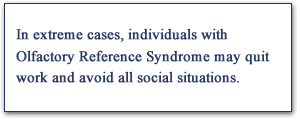





:max_bytes(150000):strip_icc()/GettyImages-sb10063821f-001-56d9e7915f9b5854a9d3806c.jpg)









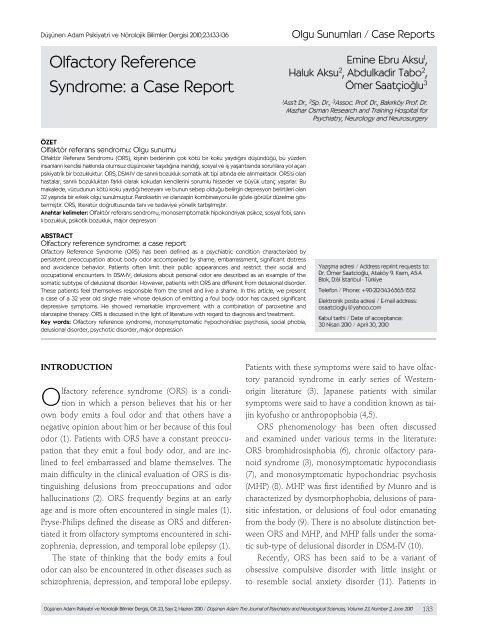










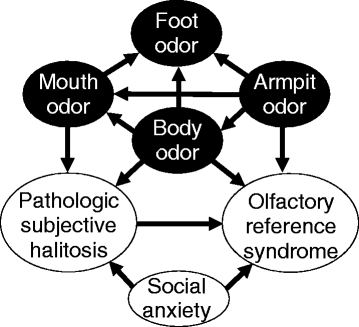
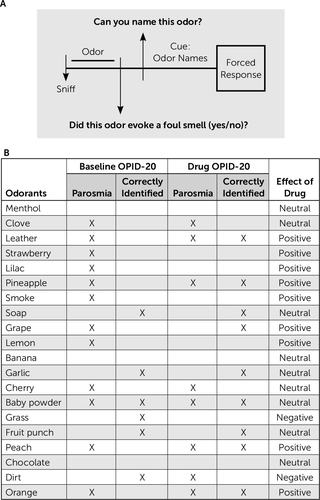



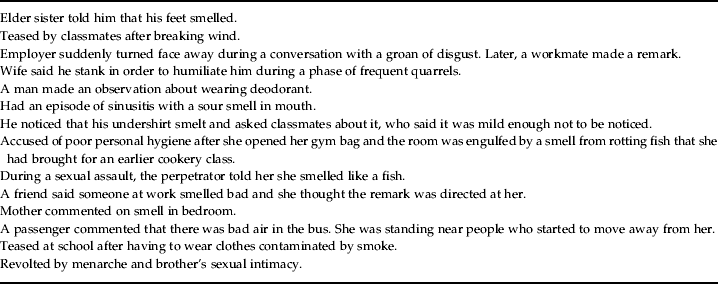





:max_bytes(150000):strip_icc()/GettyImages-107950615web-56d4a8173df78cfb37d8825c.jpg)


Posting Komentar untuk "Olfactory Reference Syndrome Treatment"